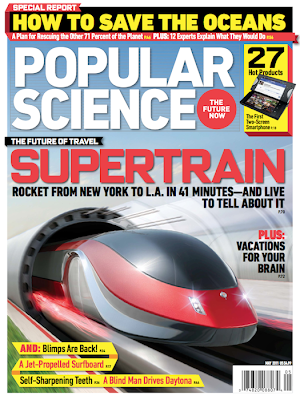(Image from Wall Street Journal)
Last year the New York MTA raised transit fares across all modes. Various studies have estimated the elasticity of transit fares at about -0.4 in the short term. See Todd Litman's work on transit fare elasticity here. An elasticity of -0.4 means is that a 1% increase in fares will result in a -0.4% drop in ridership. Since transit fares in NYC went up about 10%, there would be an expected drop in ridership by about 4% using the typical elasticity reported in the literature.
However, since the fare increase there hasn't been a drop in ridership. The May 2011 Finance Committee Meeting reports that demand for transit service in New York is inelastic in the short term:
Mr. Albert noted that this year was the first time there was a MTA fare hike without a drop in passenger ridership.(Page II-2)
Inelastic demand with regard to fares has substantial implications. Perhaps the largest implication is that the farebox operating ratio, the share of operating costs cover by fares, has improved from an expected 54% to 64% for NYC Transit. (see page XI-35 of the above linked MTA Meeting report, and note that not all modes saw an increase in the FOR.) See this City Room story for some additional details.
(I used the term improved, though some may argue that users shouldn't pay this high a share of transit operating costs and they will not see this as an improvement.) I don't know what the optimal farebox operating ratio is, but a higher ratio means the MTA has more money to pay for operations. That's good, and it's really good that higher fares have not discouraged transit trips. Obviously, money paid to the MTA is money that can't be spent on other goods and services so some people may be substituting higher transportation costs for spending that would have gone elsewhere. But overall the fare increase did not diminish mobility due to inelastic demand, which means the MTA is in slightly better financial shape than they were expecting.


